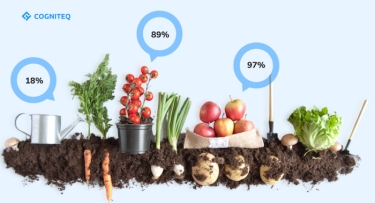This innovative approach involves connecting physical devices and sensors to the internet, enabling them to communicate and share data in real time. The integration of IoT in agriculture is revolutionizing traditional farming practices, offering numerous benefits for farmers, crop management, and overall food production.
To support the significance of IoT in agriculture, Forbes emphasizes that the global precision farming market, fueled by IoT technologies, is expected to reach $10.55 billion by 2025, showcasing the rapid growth and potential of these innovations (source: Forbes - Precision Farming Market). Statista provides insights into the increasing adoption of IoT devices in agriculture, predicting that the number of connected devices in smart agriculture will reach 27.4 million by 2025, further emphasizing the transformative impact of IoT on the industry.
The Role of IoT in Agriculture
One of the most compelling aspects of IoT technology is its versatility, with applications spanning various aspects of farm management. From precision agriculture to livestock monitoring, the following are some key areas where IoT solutions are making a significant impact:
Precision Farming: One of the key IoT applications in agriculture is connected with precision farming, a practice that involves using technology to optimize crop yields while minimizing waste. IoT-enabled devices such as soil sensors, drones, and smart tractors collect real-time data on soil conditions, weather patterns, and crop health. This data is then analyzed to create precise and customized strategies for planting, irrigation, and harvesting. By adopting precision farming techniques, farmers can reduce resource wastage, enhance productivity, and ensure sustainable agricultural practices.
Livestock Monitoring: IoT plays a crucial role in livestock management by providing real-time monitoring and tracking capabilities. Smart sensors attached to animals can collect data on their health, location, and behaviour. This information enables farmers to detect signs of illness, optimize feeding schedules, and improve overall herd management. Livestock monitoring using IoT not only enhances animal welfare but also contributes to the efficient utilization of resources, resulting in increased profitability for farmers.
Supply Chain Optimization: IoT applications extend beyond the farm, influencing the entire supply chain. From the moment a crop is harvested to its delivery to consumers, IoT devices track and monitor the produce. This ensures that crops are transported and stored under optimal conditions, reducing spoilage and waste. Supply chain optimization through IoT leads to improved traceability, quality control, and, ultimately, a more sustainable and resilient agricultural ecosystem.
Environmental Monitoring: Sustainable agriculture is a growing concern, and IoT contributes significantly to environmental monitoring and conservation efforts. Sensors placed in the field can measure environmental factors such as soil moisture, air quality, and temperature. This data helps farmers implement eco-friendly practices, reduce water usage, and minimize the environmental impact of farming activities.
Smart Irrigation Systems: IoT-enabled irrigation systems utilize sensors to monitor soil moisture levels and weather conditions, automatically adjusting water flow to optimize irrigation schedules. By precisely delivering water where and when it is needed, smart irrigation systems conserve water resources, reduce energy consumption, and minimize the risk of overwatering or drought stress, promoting sustainable farming practices.
IoT Application in Agriculture
Speaking of IoT applications in agriculture, it's impossible to ignore the profound impact these technologies are having on the industry. From precision farming to supply chain optimization, the possibilities seem endless. Companies like Cogniteq are at the forefront of developing and implementing innovative IoT solutions for agriculture. Their blog explores the top 5 applications of IoT in agriculture, shedding light on the transformative potential of these technologies.
Data-Driven Decision Making
The abundance of data generated by IoT devices in agriculture empowers farmers to make informed decisions. Advanced analytics and machine learning algorithms process the data, offering valuable insights into crop performance, disease detection, and resource optimization. By harnessing the power of data-driven decision-making, farmers can adapt quickly to changing conditions, mitigate risks, and improve overall farm management.
Challenges and Opportunities
While the adoption of IoT in agriculture brings numerous benefits, it is not without its challenges and opportunities. Understanding and addressing these factors are crucial for maximizing the potential of IoT technologies in revolutionizing the agricultural industry.
Initial Investment: One of the primary challenges of implementing IoT in agriculture is the initial investment required. Deploying sensors, drones, and other smart devices can be costly for farmers, especially those with limited resources. Additionally, the infrastructure needed to support IoT systems, such as high-speed internet connectivity, may not be readily available in rural areas. However, the upfront investment can lead to long-term cost savings and increased profitability through improved efficiency and productivity.
Data Security Concerns: With the proliferation of connected devices and the vast amounts of data they generate, data security has become a significant concern. Farmers need assurance that their sensitive agricultural data, including crop yields, soil composition, and financial information, is protected from cyber threats. Collaborations between technology providers and regulatory bodies are essential to establish robust security protocols. Despite these concerns, effective data security measures can build trust among farmers and encourage wider adoption of IoT technologies.
Integration and Compatibility: The agricultural industry is diverse, with different types of farms employing various technologies and equipment. Ensuring seamless integration and compatibility of IoT devices with existing farming equipment can be a challenge. Farmers may face difficulties in adopting IoT solutions if they are not compatible with their current machinery or if the learning curve for implementation is steep. However, companies developing IoT solutions have the opportunity to collaborate with agricultural equipment manufacturers to create interoperable systems that are easier to integrate into existing farm operations.
Education and Training: For farmers to fully harness the potential of IoT, there is a need for education and training programs. Many farmers, especially in developing regions, may not be familiar with the latest technological advancements. Providing accessible and tailored training programs can empower farmers to leverage IoT technologies effectively. Governments, agricultural organizations, and technology providers can collaborate to develop training initiatives that address the specific needs and challenges of farmers in different regions.
Data Overload: The abundance of data generated by IoT devices can be overwhelming, leading to a potential data overload. Farmers need tools and analytics platforms that can efficiently process and interpret the data, providing actionable insights. Without proper data management strategies, the valuable information collected may go underutilized. However, advancements in data analytics and artificial intelligence present opportunities to develop sophisticated algorithms that can extract meaningful insights from large datasets. By leveraging these technologies, farmers can make more informed decisions and optimize their agricultural practices for improved outcomes.
Final Word
As we stand on the cusp of a technological revolution, the integration of IoT in agriculture holds the promise of a more sustainable, efficient, and resilient future for the industry. From precision farming to supply chain optimization and environmental monitoring, the applications of IoT are diverse and impactful. As farmers continue to embrace these technologies, the agricultural landscape is set to undergo a profound transformation, ensuring food security and sustainability for generations to come.










































